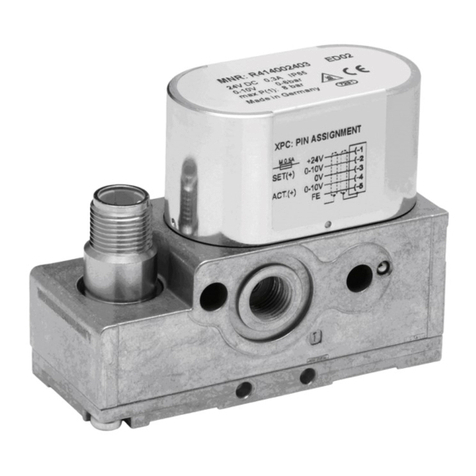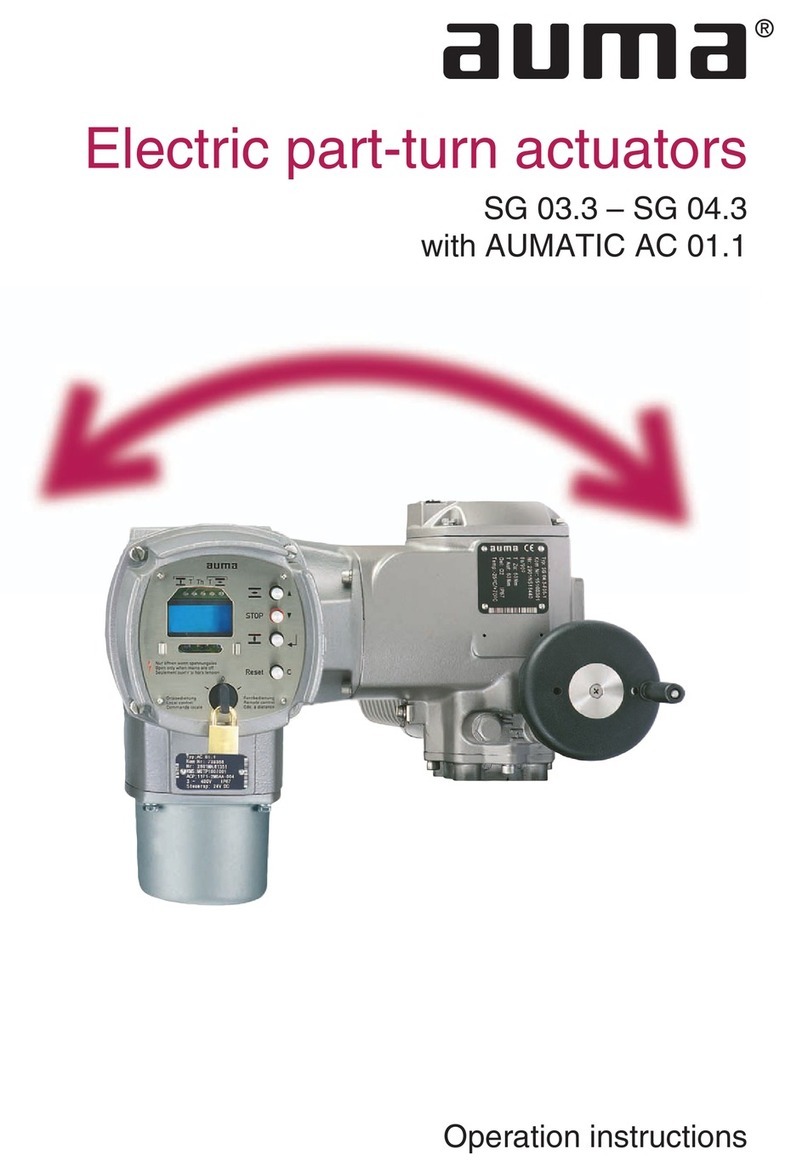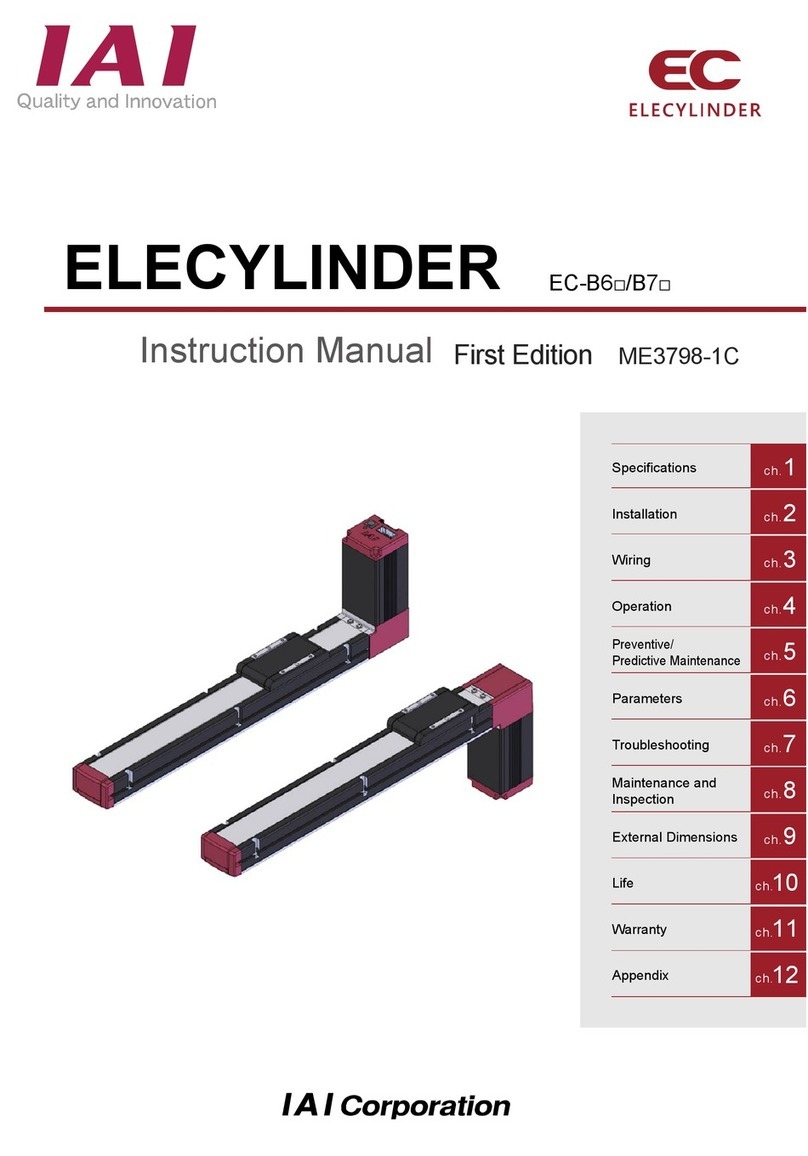Teltone M-390 User manual

Polling Controller
M-390
Product Manual
40-400-00013, Rev. C

40-400-00013, Rev. C
Note
This manual covers Model M-390-A-04.
Copyright Notice
Copyright © 1993 - 2004Teltone Corporation
All Rights Reserved
Trademarks
Teltone is a registered trademark of Teltone Corporation.
Windows is a registered trademark of Microsoft Corporation.
Other company and product names may be trademarks or
registered trademarks of their respective owners.
Teltone Corporation
Bothell, Washington,USA
Customer Service: 425-951-3388
Technical Support: 425-951-3390
Fax: 425-487-2288
Website: www.teltone.com

Contents
U.S. FCC COMPLIANCE INFORMATION........................ iii
CANADIAN COMPLIANCE ................................... iii
About This Manual ............................................ iv
Conventions Used In This Manual ............................... iv
Chapter 1: Getting Started..............................................1
Where to Start..................................................1
Product Registration ............................................2
Technical Support...............................................2
LED Indicators .................................................2
Table 1: LED Indicators on the Polling Controller...................2
Mounting Options ..............................................3
Compatibility ..................................................3
Figure 1 Polling Controller ......................................4
Chapter 2: Overview ..................................................5
Figure 2 Typical Application.....................................5
Basic Operation.................................................6
Chapter 3: Polling Controller Installation ................................7
Are You Ready? ................................................7
Single Unit Installation..........................................7
Installing Multiple Units in Carrier................................8
Figure 3 Polling Controller Carrier (UM-112-801)...................9
Chapter 4: Programming ..............................................11
Remote Programming the LSS...................................11
Setup Polling Controller for Programming ........................11
40-400-00013,Rev.C Pagei

Polling Controller Programming Commands ..................... 12
Table 2: Polling Controller Programming Commands ............. 12
Changing Transfer Codes ...................................... 14
Table 3: Routing Codes for LSS Device Ports...................... 14
Table 4: Transfer Codes for Remote Programming ................. 16
Example: Table 4 Transfer Codes for Remote Programming.......... 16
Table 5: Port Routing Code Defaults............................. 17
Chapter 5: Polling Controller Operation................................. 18
Typical Call Sequence .......................................... 18
Programmable Options ........................................ 19
Chapter 6: Warranty and Return....................................... 23
Chapter 7: Quick Start Guide.......................................... 24
Appendix 1: Specifications............................................ 29
Appendix 2: Ordering Information .................................... 31
Appendix 3: Glossary................................................. 32
Appendix 4: Index ................................................... 35
Page ii

40-400-00013, Rev. C Page iii
U.S. REGULATORY COMPLIANCE
FCC Part 68 Notice: To comply with FCC Part 68 regulations, the following requirements must be met:
1. If the telephone company requests information on the equipment connected to their lines, please tell them:
a. the telephone number the equipment is connected to;
b. this equipment operates on standard RJ11 phone jacks;
c. the FCC registration number;
d. the ringer equivalence number (REN). The REN shows how many devices, such as phones, modems, etc. can be
connected to your line. In most areas, there cannot be more than five devices (i.e., a REN of five) on a phone line.
If the REN is exceeded, then your phone may not ring properly.
NOTE: Items C and D above are found on the label on any Teltone equipment connected to your telephone line.
2. These devices must not be installed on coin-operated telephone lines or party lines.
3. Repair work on this device must be done by Teltone Corporation.
4. If any trouble is experienced with this equipment, the telephone company may request that the customer disconnect
the registered equipment from the telephone line to determine if the registered equipment is malfunctioning and if the
registered equipment is malfunctioning, the use of such equipment shall be discontinued until the problem has been
corrected.
FCC Part 15 Class A Notice (M-390-A only): This equipment has been tested and found to comply with the limits for a
Class A digital device, pursuant to part 15 of the FCC Rules. These limits are designed to provide reasonable protection
against harmful interference when the equipment is operated in a commercial environment. This equipment generates,
uses, and can radiate radio frequency energy and, if not installed and used in accordance with the instruction manual,
may cause harmful interference to radio communications. Operation of this equipment in a residential area is likely to
cause harmful interference in which case the user will be required to correct the interference at his own expense.
CANADIAN REGULATORY COMPLIANCE
Notice: This equipment meets the applicable Industry Canada Terminal Equipment Technical Specifications. This is
confirmed by the registration number. The Industry Canada label or the abbreviation, IC, before the registration number
signifies that registration was performed based on a Declaration of Conformity indicating that Industry Canada technical
specifications were met. It does not imply that Industry Canada approved the equipment. Industry Canada does not
guarantee the equipment will operate to the user's satisfaction. Before installing this equipment, users should ensure that
it is permissible to connect it to the facilities of the local telecommunications company. The equipment must also be
installed using an acceptable method of connection. In some cases, the company’s inside wiring associated with a single
line individual service may be extended by means of a certified connector assembly (telephone extension cord). The
customer should be aware that compliance with the above conditions may not prevent degradation of service in some
situations.
Repairs to certified equipment should be made by Teltone Corporation. Any repairs or alterations made by the user to this
equipment, or equipment malfunctions, may give the telecommunications company cause to request the user to
disconnect the equipment. Users should ensure for their own protection that the electrical ground connections of the
power utility, telephone lines, and internal metallic water pipe system, if present, are connected together. This precaution
may be particularly important in rural areas.
Caution: Users should not attempt to make such connections themselves, but should contact the appropriate electric
inspection authority, or electrician, as appropriate. The Ringer Equivalence Number (REN) assigned to each terminal
device provides an indication of the maximum number of terminal devices to be connected to a telephone interface
without overloading the interface. The termination on an interface may consist of any combination of devices subject only
to the requirement that the sum of the REN of all devices does not exceed five (5) in most, but not all cases. Check with
your local exchange carrier for the REN limit in your service area. The REN assigned to each device is located on the
equipment label.
COMPLIANCE NOTICE: This digital apparatus does not exceed the Class A limits for Radio Noise Emissions set out in
the equipment standard ICES-003 for digital apparatus.
AVIS DE CONFORMATION: Le présent appareil numérique n’émet pas de bruits radioélectriques dépassant les limites
applicables aux appareils numériques de la class A prescrites dans le Règlement sur le brouillage radioélectriques édicté
par le ministère des Communications du Canada.

About This Manual
This manual describes the Teltone®M-390-A Polling Controller. The Polling
Controller and one or more Line Sharing Switches work together as a system
(U.S. Patent No. 5,241,587) for periodic data transmission.
The Polling Controller works with the Line Sharing Switch (LSS) in retail
applications and with the Substation Line Sharing Switch in electrical power
utility applications. In this manual, LSS is used to indicate both switches.
The reference manual accompanying the LSS explains how to install, program,
test, and operate the LSS or SLSS and should be used in conjunction with this
manual.
Conventions Used In This Manual
Where steps are optional, they are labeled: (Optional). Where you are to
choose between two or more steps, they are separated by: -or-
Underlined terms in the text are defined in the glossary.
Each step is accompanied by a check box:
❑Check the box when you finish the step.
Some steps are examples and look like this:
❑This is an example step.
Polling Controller Reference Manual
Page iv

Chapter 1: Getting Started
Installation and setup require that a person be on-site with the Polling
Controller and one with the Line Sharing Switch.
Please note that programming is not required to operate the Polling
Controller with the Line Sharing Switch. You should program only if you wish
to customize the system for your application.
Where to Start
Select one of the two configurations below to get started. When you get to the
setup, installation, and programming steps, read all instructions and the
examples thoroughly before you begin.
Line Sharing Switch and Polling Controller Configuration
•To setup the Polling Controller, follow the instructions in Chapter 3, Single
Unit Installation. (These instructions are also in the LSS Reference Manual,
Chapter 2: Polling Controller Installation.)
•If you are using several Polling Controllers and have purchased a Carrier,
follow Installing Multiple Units in Carrier in Chapter 3.
Note:
When you have finished installation and have tested each Polling
Controller, you can program the unit to operate with different commands. The
factory defaults, which are used until you program the unit, let you get started
and operate the unit immediately.
•(Optional.) To program the Polling Controller, review the commands in
Table 2, then follow the Setup Polling Controller for Programming
instructions in Chapter 4.
You must program if: you have programmed the Line Sharing Switch to use
different Port Transfer Codes or if you will daisy-chain the units.
Daisy-chain LSS Configuration
•This configuration is intended for experienced users only. Follow the
instructions to install, test, and program new Port Transfer Codes.
Chapter 1: Getting Started
40-400-00013,Rev.C Page1

Product Registration
Please fill out the Product Registration card and return it to Teltone
Corporation. The information on the card will assist us in providing you with
Technical Support.
Technical Support
If you experience trouble with the Polling Controller, please contact Teltone
technical support at 425-951-3390.
LED Indicators
A power and status indicator LED is located on the back panel and operates as
described in Table 1.
Table 1 LED Indicators on the Polling Controller
LED Operation Indicates
Slow blink, full/half brightness Unit idle
Slow blink, on/off Unit in service
Steady on with double blink off every 1.5 sec Unit sending code to LSS
Fast blink on/off Disconnect received from LSS
Steady on, full brightness, no blink Power present but unit not functioning properly
Connectors
All connectors are located on the back panel. Connectors consist of:
-an RJ-11 Central Office (CO) line jack and an RJ-11 Polling Modem line jack
-a Class 2, 24 Volt DC, 400 mA power jack. Use only with a Class 2 power source.
Thecenterpin ispositiveonthiscoaxialpowerjack.Thetransformeroperates
from a standard 120 VAC wall power. A UL and CSA approved AC to DC
transformer converts the input voltage to the 24 VDC required by the unit.
Whenmodulesare placedinacarrier,thesinglein-cableAC-poweredsupply
internaltothecarrierisusedsothatatransformerforeachunitisnotrequired.
Power Loss
While the routing features of the Polling Controller will be disabled if a power
outage occurs, you will be able to make and receive other calls.
Polling Controller Reference Manual
Page 2

Mounting Options
The Polling Controller may be placed on a shelf or installed in a Polling
Controller Carrier holding up to eight units. The carrier, shown in Figure 3,
holds the Polling Controller modules in a 19- inch relay rack, in center- or
front-mount positions, and provides power and line connections. Asingle AC
power cord connects to the internal power supply.
Compatibility
The Polling Controller and LSS are intended for use with Loop Start telephone
lines and devices. The system should not be used with Ground Start telephone
lines or devices. Most telephone lines and devices support Loop Start
operation. Please check with your telephone company, if you are uncertain
about your particular telephone line.
Chapter 1: Getting Started
40-400-00013,Rev.C Page3

Polling Controller Reference Manual
Page 4
Figure 1 Polling Controller

Chapter 2: Overview
The Teltone®Polling Controller and LSS (Line Sharing Switch or Substation
Line Sharing Switch) enable businesses and utilities having a single telephone
line or those using multiple telephone lines for data transfers to save costs
through line sharing.
Although the LSS can also be used as a standalone unit, providing a flexible,
cost-effective way to consolidate lines and route calls, Teltone strongly
recommends the use of a Polling Controller.
When working together, the two units communicate across the Public
Switched Telephone Network (PSTN) to set up and disconnect calls as well as
to determine priorities among devices and types of calls (e.g., outgoing
emergency calls from the substation take priority over polling calls).
Programming of options in the Polling Controller is done with a touchtone
telephone connected to the unit. The LSS can also be remotely programmed
through a touchtone telephone connected to the Polling Controller.
Figure 2 illustrates a typical application, in which a single telephone line is
shared by four devices: two modems, a fax machine receiving automatically
routed fax calls, and one telephone for incoming and outgoing calls.
The Polling Controller (Figure 2) is installed at the central polling location to
control how data calls are routed by the LSS.
Figure 2 Typical Application
Chapter 2: Overview
40-400-00013,Rev.C Page5

Basic Operation
The LSS answers incoming calls, determines the port to which the call should
be sent, and routes the call. If a transfer code is received from a Polling
Controller, the LSS routes the call to the requested device, such as a polled
modem.
If no transfer code is received, the call is routed to the default port (Port 1 is the
factory default), usually connected to a telephone. However, if no default port
is defined at the LSS, calls without transfer codes are disconnected.
The Polling Controller ensures that the transfer code is sent at the appropriate
time in the dial string. As a result, data calls are routed to the correct port at
the LSS every time, without guesswork about dial string progress. In addition,
the Polling Controller will hang-up polling calls at the originating end when a
priority outbound call is initiated at the LSS. This ensures that a caller at the
LSS will get faster processing of the priority call.
A single Polling Controller can be used to call many LSS units.
The Polling Controller also translates the routing code supplied in the modem
dial string to either a factory set (i.e., unpublished and proprietary) transfer
code, or to a transfer code programmed by the system manager. The
unpublished and programmable transfer code provide added security to your
substation devices by hiding the remote modem from unauthorized access.
Polling Controller Reference Manual
Page 6

Chapter 3: Polling Controller Installation
As illustrated in Figure 2, the Polling Controller is installed at the location
from which you originate data calls to the LSS site, between the calling modem
and the telephone line. Use standard modular telephone cords for all line
connections (not supplied). The Polling Controller does not require any change
to your existing hardware.
Please refer to Chapter 2 for interface requirements for the Polling Controller.
Note:
If lightning storms are common in your area, we recommend that you
install a surge protection device between the Polling Controller and the
incoming telephone line.
Are You Ready?
Check that you have:
❑Polling Controller(s): M-390-A
❑Product Registration card (1 for each unit)
❑PS-24DC-01 Power Transformer with cord, 24 VDC (nominal), 400-500 mA
-or-
❑UM-112-801 Polling Controller Carrier which houses up to 8 M-390-A-04
units (available as an ordering option in Appendix 2)
Single Unit Installation
The following instructions are intended to help you install the Polling
Controller.
Note:
Be aware that certain dial codes including ∗or #may already be used
by your PBX or Key system to operate special features. If you have difficulty
using these codes in dialing strings, please contact Teltone Technical Support.
CAUTION:
(1) Never install telephone wiring during a lightning storm.
(2) Never install telephone jacks in wet locations unless the jack is specifically designed for wet locations.
(3) Never touch uninsulated telephone wires or terminals unless the telephone line has been
disconnected at the network interface.
(4) Use caution when installing or modifying telephone lines.
Chapter 3: Polling Controller Installation
40-400-00013,Rev.C Page7

Step 1: Connect telephone line
❑Connect a telephone line to the Polling Controller jack labeled “Telco Line”
using a standard modular cord (not supplied).
Step 2: Verify polarity of CO line wiring
❑Use a standard polarity tester to check the polarity. Polarity must be
correct on the wiring to the units to minimize relay contact wear and avoid
“bell tap,” a momentary or single ring of the telephone bell.
Caution:
The unit should be powered down whenever you test polarity.
Step 3: Connect modem line
❑Connect the polling modem to the Polling Controller jack labeled Modem
using a standard modular cord (not supplied).
Step 4: Connect power
❑Connect the power cord to the Input Power jack on the Polling Controller
and the transformer to a non-switched, standard AC wall outlet.
Step 5: Test the installation
❑The Power/Status indicator should begin flashing. If it is not on, check that
the power cord is securely connected and that the outlet has power. If the
LED is on bright, but does not flash, call Technical Support for assistance.
❑After each LSS that will be polled by this unit has been installed, place a
call to each of its device ports and verify that the call is correctly routed. To
access the various LSS ports, refer to Table 3 to determine the routing code,
and enter a dialing string similar to the following:
ATDT4871515∗02
(With this dial string, the modem calls through the Polling Controller to LSS
Port 2. In this example, the LSS incoming line number is 487-1515.)
Installing Multiple Units in Carrier
The Polling Controller Carrier (model UM-112-801) is used for the installation
of up to eight M-390-A-04 Polling Controller units. See Figure 3. (The carrier is
available as an ordering option.) Follow the steps below to install the carrier
and Polling Controllers:
Step 1: Install carrier in rack
❑Figure 3 shows mounting brackets attached to the carrier in the position
required to center-mount the carrier in a 19-inch rack. If the carrier is to be
front-mounted, reposition the brackets as appropriate.
Polling Controller Reference Manual
Page 8

❑Attach the carrier to the rack frame using the screws provided.
Step 2: Make power and line connections to each unit
Complete the following steps for each Polling Controller to be installed:
❑Insert the unit in any of the eight slots (the slots are interchangeable), with
the power jack towards the bottom and the LED towards the top.
❑Connect power to each unit installed in the Carrier. (Eight power jacks are
available in the cable trough at the front of the carrier, below the card
slots.)
❑Connect a telephone line to the Polling Controller jack labeled “Telco Line”
using a standard modular cord (not supplied). Tag and label each line for
future reference.
❑Use a standard polarity tester to check the polarity. Polarity must be
correct on the wiring to the units to minimize relay contact wear and avoid
“bell tap,” a momentary or single ring of the telephone bell.
Caution:
The unit should be powered down whenever you are testing polarity.
UM-112.CDR
12.00" MAX
5.00" MAX
17.30" MAX
19.00"
18.31"
6.96" MAX
4.00"
POLLING
CONTROLLER,
M-390
Figure 3 Polling Controller Carrier (UM-112-801)
Chapter 3: Polling Controller Installation
40-400-00013,Rev.C Page9

❑Connect the polling modem cable to the Polling Controller jack labeled
“Modem” using a standard modular cable (not supplied). Tag and label each
line for future reference.
Note:
Cable runs are provided along both sides of the carrier so that cables
can be brought out to the back of the carrier.
Step 3: Connect wall power
❑Connect the carrier power cord to a non-switched, standard AC wall outlet.
Step 4:
❑The Power/Status indicators on the Polling Controller should begin
flashing. If they are not on, check that the power cord is securely connected
and that the outlet has power. If an LED is on bright, but does not flash,
please contact Technical Support for assistance.
❑Determine whether the LSS units that will be polled by the Polling
Controller have been programmed for your application. If not, this can be
done from your location using remote programming, as described in
Chapter 4.
❑After each LSS that will be polled by these units has been installed, place a
call to each of its device ports and verify that the call is correctly routed. To
access the various LSS ports, refer to Table 3 to determine the routing code,
and enter a dialing string like this:
ATDT4871515∗02
Note:
With the above dial string, the modem calls through the Polling
Controller to LSS Port 2. In this example, the LSS incoming line number is
487-1515.
❑Test each LSS and Polling Controller.
❑When testing is complete, the unit is ready to go to work.
-or-
❑You can program the Polling Controller if required by your application.
Polling Controller Reference Manual
Page 10

Chapter 4: Programming
Commands for programming the Polling Controller are listed in Table 2.
Cancel Command
To cancel all or part of a command, enter ∗in a command field. To cancel all
digits entered back to (but not including) the previous #, enter ∗in a data field.
To cancel the entire command, ∗∗ in a data field aborts the entire command. If
no data is entered in a field, that field is cleared.
Transfer Codes
Remember that all transfer codes must be the same length (i.e., contain the same
number of digits) and each code must be unique. The transfer codes can use
any of the 12 DTMF digits (0-9, *, and #).
Remote Programming the LSS
The LSS can be programmed remotely from the Polling Controller, if remote
programming has been enabled at the LSS. (The factory default is remote
programming enabled.)
Note:
If you have not changed the Access Transfer Code for Remote
Programming, use Routing Digit #7 to access remote programming mode at
the LSS.
If the telephone connection is lost during programming or the LSS loses
power, the last completed command will have been saved, but any incomplete
command will be lost.
Setup Polling Controller for Programming
❑Disconnect the host modem and connect a DTMF telephone to the Modem
jack on the Polling Controller.
❑Go off-hook and enter # # within 15 seconds.
❑When you hear confirmation tone (3 beeps), begin programming. If you
hear error tone (1 long beep), enter # # again.
Chapter 4: Programming
40-400-00013,Rev.C Page11

Polling Controller Programming Commands
The table below outlines each command and provides information about the
entries and factory defaults. These values can be changed if needed.
Please refer to Chapter 5 Programmable Options for explanations of the
various features.
We have provided the Customer Settings column for you to enter changes as
you program the unit. Please use this column, as it can help you track the
unit’s settings. Make your entries in pencil, as you may wish to change them
at a later date.
Table 2 Polling Controller Programming Commands
Command Description Valid entries
(x = /n=/y=) Factory
Default Standalone
Default Customer
Settings
*00#*00# Restore to Factory Defaults — —
*00#*02# Restore to Standalone
Defaults
*01#x# Enable Automatic Transfer
codes
x = 0-16
1-16 are port
numbers
0 = disabled
00
*02#x# No Default Ringing
(Turn Default Ringing on and
off)
0 = disabled
1 = enabled 00
*03#x# End Dial String
(Adds # terminator) 0 = disabled
1 = enabled 00
*04#x# Recognize programmable
routing codes
0 = disabled
1 = enabled
(Also Line Split
Method must be
Six Digits)
00
*05#x# Line Split Method:
(Routing Code Detect or Six
Digits)
0 = routing code
detect
1 = delay after
six digits
00
*06#x# Transfer Code Transmit Delay
1-60 seconds
(Only active if
Line Split Method
is Six Digits)
16 16
*07#x# Number of Transfer Code
Transmissions
0 = no limit
4-20 = give up
after this number
of transmissions
99
Polling Controller Reference Manual
Page 12

Table 2 Polling Controller Programming Commands
Command Description Valid entries
(x = /n=/y=) Factory
Default Standalone
Default Customer
Settings
*10#yy#n#x
#
Port Transfer Codes
(Must reprogram transfer
codes at the switch if these
are changed from Factory
Default)
yy = port
number, 01-16
n = number of
digits
x = transfer
code (0-9,*,#)
Proprietary
Port 1 = 11
Port 2 = 22
Port 3 = 33
Port 4 = 44
Port 5 = 55
Port 6 = 66
Port 7 = 77
Port 8 = 88
Port 9 = 19
Port 10 = 29
Port 11 = 39
Port 12 = 49
Port 13 = 59
Port 14 = 69
Port 15 = 79
Port 16 = 89
*11#y#n#x# Access Code for Remote
Programming
y = device
number, 1-4
n = number of
digits
x = access code
(0-9,*,#)
Proprietary
Device 1 = #1
Device 2 = #2
Device 3 = #3
Device 4 = #4
*15#yy#n#x
#Port Routing Codes
yy = port
number, 01-16
n = number of
digits, (must be
3)
x = routing code
(0-9,*,#), (must
start with 0)
See Table 5 See Table 5
*16#y#n#x# Remote Programming
Routing Codes
y = device
number, 1-4
n = number of
digits (must be 3)
x = routing code
(0-9,*,#), (must
start with 0)
See Table 4 See Table 4
Note:
All transfer codes must have the same number of digits and must be
unique.
Chapter 4: Programming
40-400-00013,Rev.C Page13

Changing Transfer Codes
The table below lists the default routing code and the associated LSS ports. If
you wish to change the transfer codes from the proprietary (i.e., unpublished)
defaults, please record the new transfer code in the column on the right.
SLSS Users:
While routing codes for 16 ports are listed below, the number of
ports in your application depends upon which model SLSS you are using: the
M-395-A has four ports and the M-396-A has eight.
Note:
All transfer codes must have the same number of digits and must be
unique.
The routing code for ports 9 - 16 and the Port Groups are used for daisy-chain
applications only. If yours is not a daisy-chain application, disregard the
daisy-chaining information.
Note:
If the LSS you are working with uses the routing codes *7-*0, continue
to use these routing codes. (These are the first four codes in the table.)
❑Fill in the Transfer Code column with the new entries. Plug a DTMF
telephone into the Modem port on the Polling Controller.
❑Pick up the telephone and press # #. Listen for beeps then enter the Port
Transfer Code command.
❑For example: Enter: *10#03#2#33 to change the Port 3 transfer code to 33.
Table 3 Routing Codes for LSS Device Ports
Transfer Code
Daisy-chain
Port Groups
Routing
Code
(DTMF) LSS Port Factory Default
Transfer Code
To Match SLSS
Standalone
Defaults
Customer
Settings
None
*7 1 proprietary/
non-programmable
Not applicable
*8 2 proprietary/
non-programmable
*9 3 proprietary/
non-programmable
*0 4 proprietary/
non-programmable
1
*01 1 11
*02 2 22
*03 3 33
*04 4 44
Polling Controller Reference Manual
Page 14
This manual suits for next models
1
Table of contents
Popular Controllers manuals by other brands
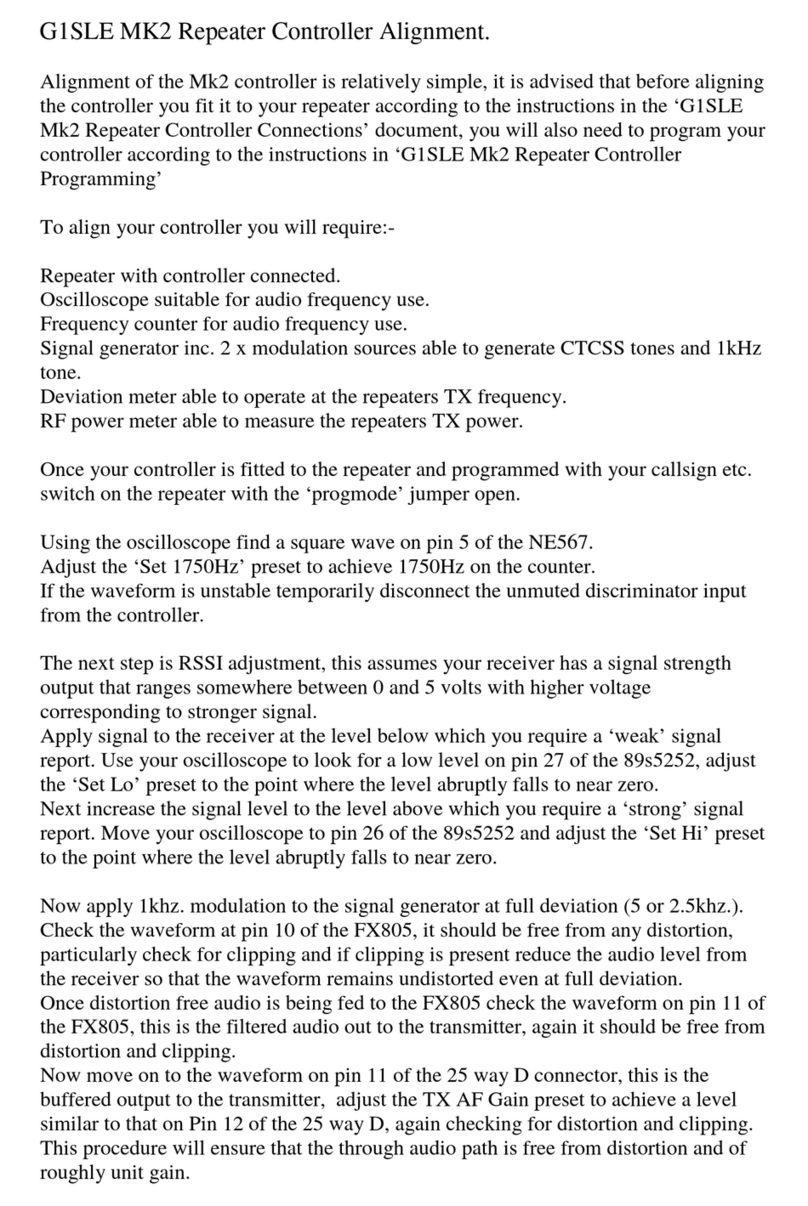
G1SLE
G1SLE MK2 Alignment Guide
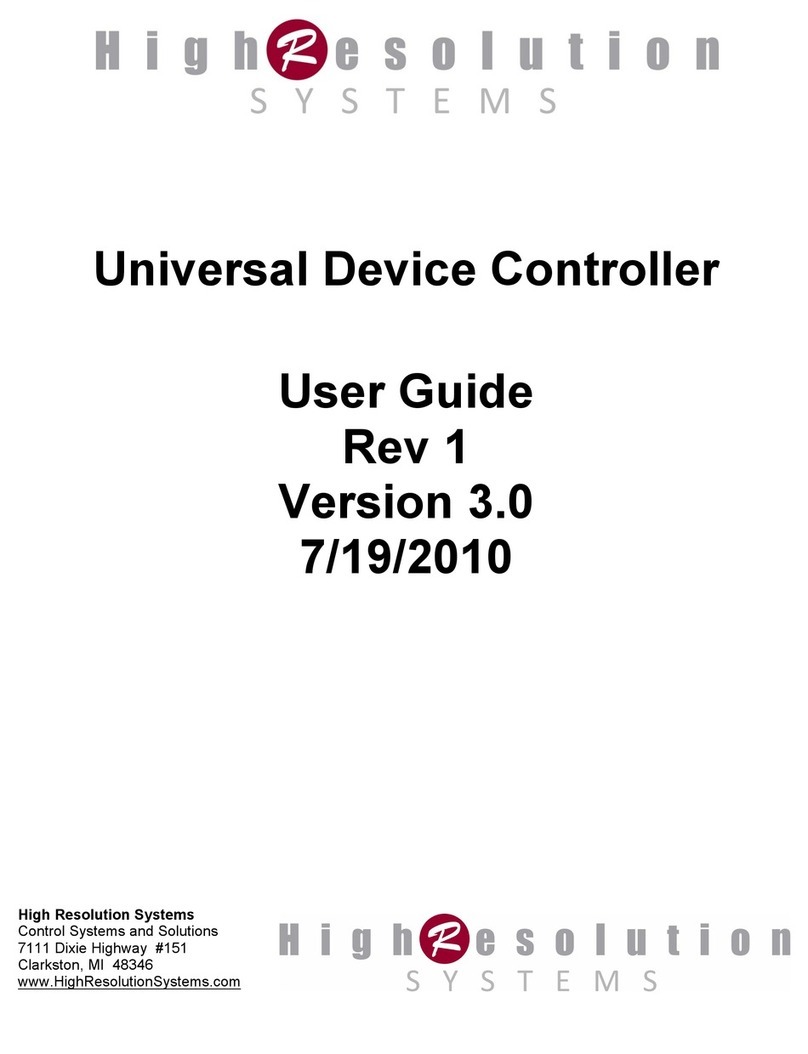
High Resolution Technologies
High Resolution Technologies UDC-400 user guide
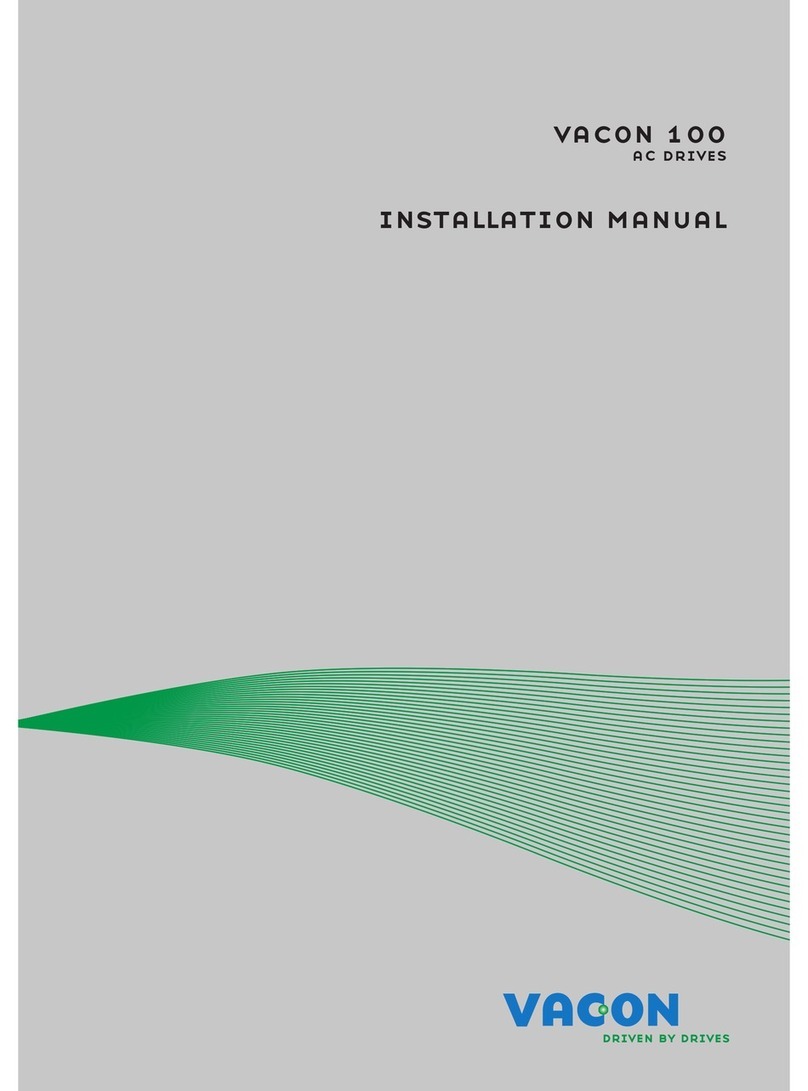
Vacon
Vacon 100 INDUSTRIAL installation manual
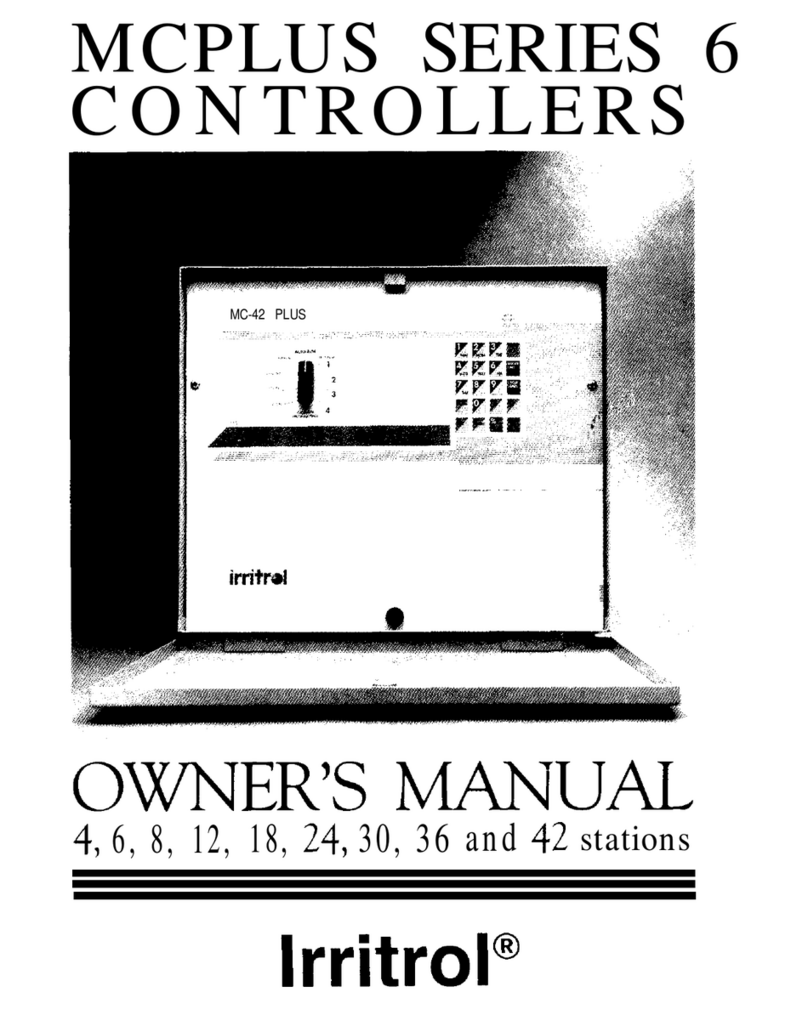
Irritrol
Irritrol MCPLUS Series owner's manual
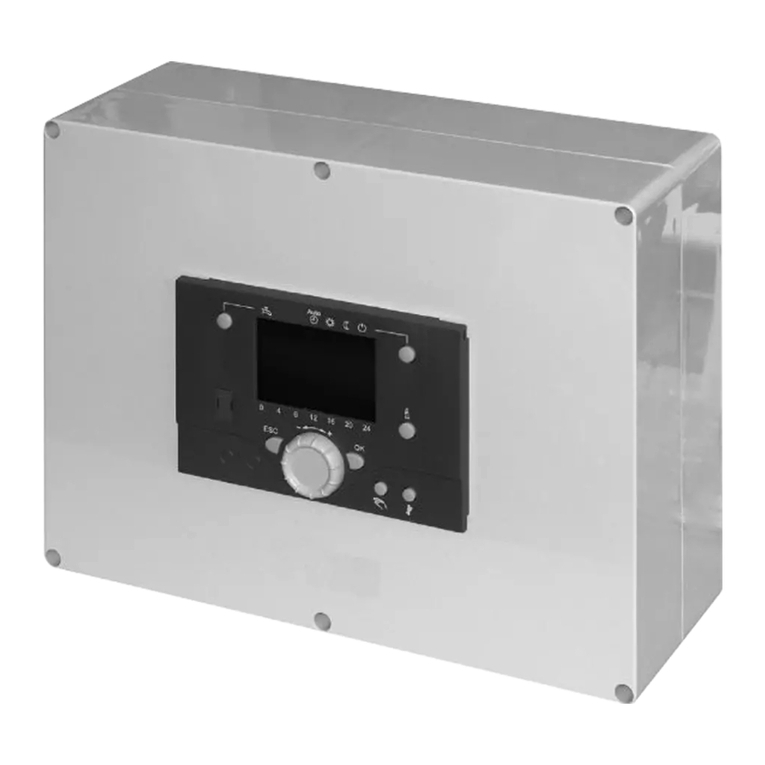
Fujitsu
Fujitsu WATERSTAGE UTW-SCB A Series Operation manual
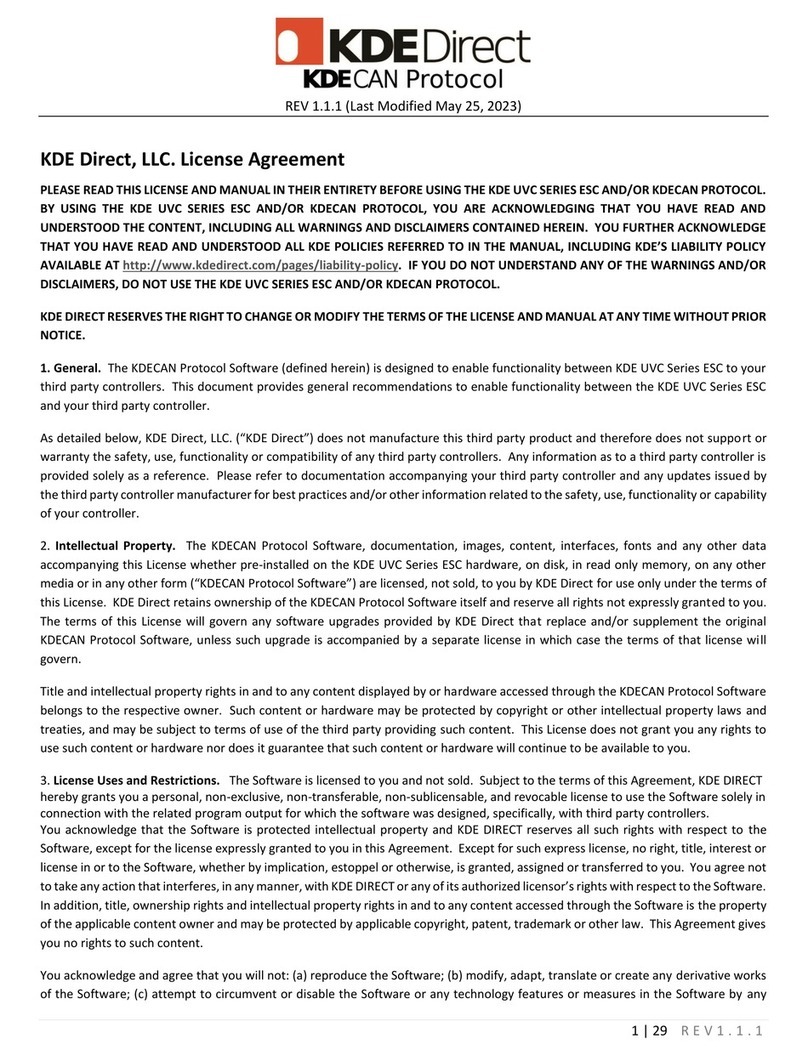
KDE Direct
KDE Direct KDECAN Protocol KDE-UAS125UVC-HE manual

SYCLOPE
SYCLOPE ALTICE'O Communications instructions

Wheatstone Corporation
Wheatstone Corporation GPC-3 Studio turret Technical manual
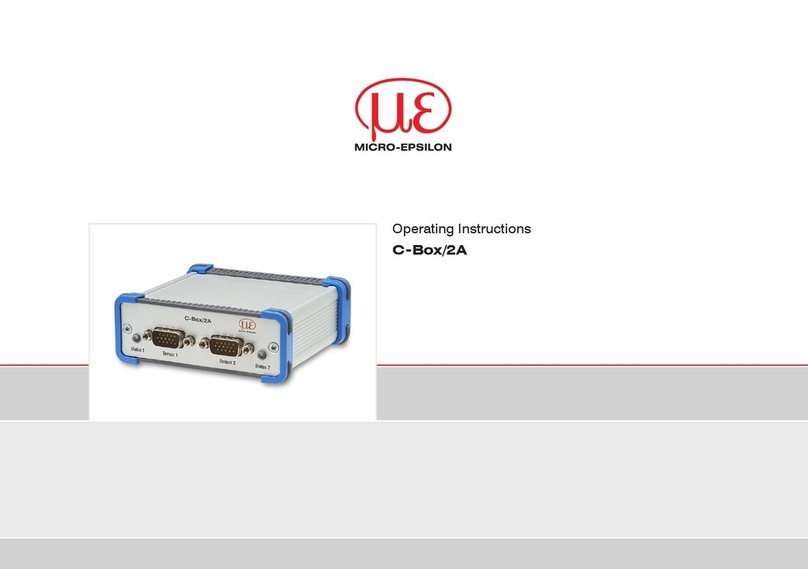
MICRO-EPSILON
MICRO-EPSILON C-Box/2A operating instructions
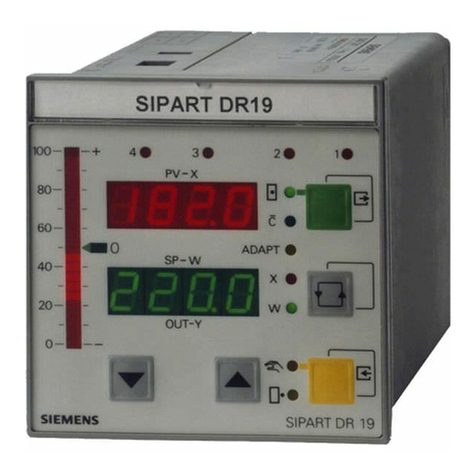
Siemens
Siemens SIPART DR19 quick reference

LOXONE
LOXONE Touch Air quick guide
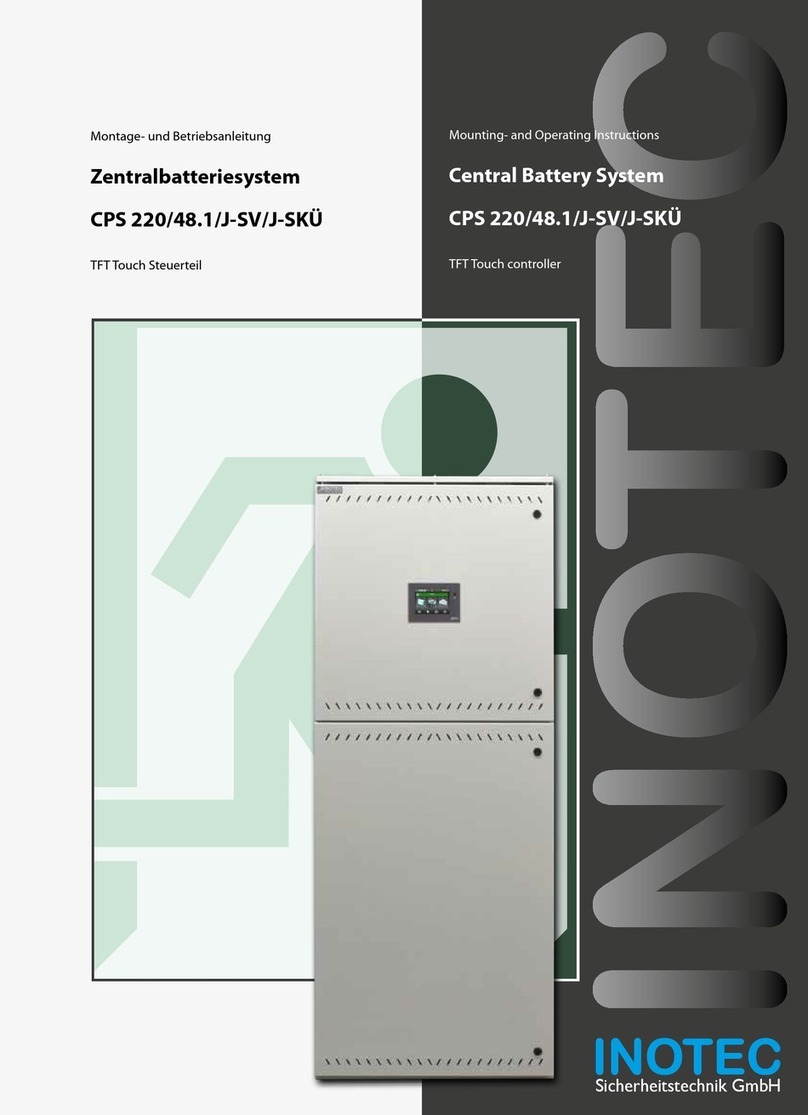
InoTec
InoTec CPS 220/48.1 Series Mounting and operating instructions
